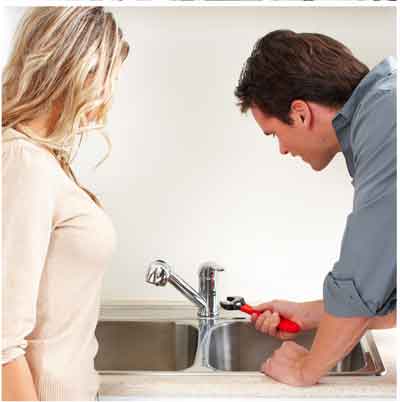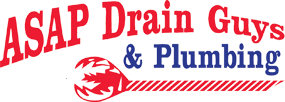
Every facility has its plumbing problems. It’s just to be expected. But for property managers with numerous residential units those issues can seem like a never-ending run on a treadmill. Fortunately, many of the most common plumbing problems can be avoided with a little care. Unfortunately, that care has to be taken by tenants. What’s in it for them? By reminding them how annoying and disruptive a backed up drain or toilet (or even a leaky faucet) can be and explaining how much just a few easy habits can make, you can enlist their help in preventing plumbing those problems from happening in the first place.
What a Property Manager Can Do
Of course you need to take care of your end of things with regular inspections and keeping up to date with professional maintenance. That should keep major surprises to a minimum. By explaining how to prevent plumbing problems to renters you can then cut way down on those nagging minor headaches as well.
You can communicate the following tips as part of your move-in packages, then remind tenants of them through printed and email newsletters as well as through add-ons to other communications. If you have a good working relationship with a plumbing contractor you may find them quite willing to answer tenant questions over the phone, contribute to your newsletter, and even attend HOA or renter’s meetings and events.
You need to give some forethought as to where you want to draw the line between encouraging and discouraging occupants from do-it-yourself efforts for your particular tenants. From the renter’s perspective that’s the threshold between tasks that only require tools and supplies that most people already have (or can quickly buy at a grocery store) and those that require more. From the property manager’s perspective it’s the risk of someone making things worse as well as liable issues. Most likely you’ll want to point out some risky repairs, such as replacing a faucet or toilet, that you most certainly don’t want people doing themselves.
According to the American Apartment Owners Association the top 5 most common plumbing problems, in no particular order, are clogged drains, backed up toilets, leaky fixtures, low water pressure, and jammed garbage disposals (https://www.american-apartment-owners-association.org/property-management/remodel-and-repair/how-to-prevent-the-5-most-common-plumbing-problems/). So let’s cover those as you might present them to your tenants.
Preventing Plumbing Problems — Tips for Tenants
No one likes having their daily routine disrupted by a clogged drain or broken garbage disposal, or their day ruined by a backed up toilet. Nor waiting around for a plumber or having someone you don’t know in your home while you’re away. So it’s well-worth adding some dos and don’ts to you habits to keep such problems from ever happening. Here are some key ways to prevent plumbing problems that are quick and easy. A few may surprise you.
Clogged Drains
If you’re not taking a few simple precautions you’ve probably been finding yourself dealing with clogged drains at least once or twice a year. The general theme is to avoid letting anything other than water go down the drain. Here’s a few specifics.
- Kitchen Sinks Never pour cooking oil or grease down a drain (or flush it down a toilet for that matter). It quickly cools, solidifies, and builds up layer after layer inside pipes. Drains run more and more slowly, and eventually back up completely. Whether using a liquid drain cleaner or a plumber’s snake these are the most difficult clogs to clear, and so they have a habit of coming back over and over. Keep old jars or milk cartons handy. Pour the grease into them, then dispose of it with your regular garbage instead. Also, use the sink strainer at the drain to keep bits of food out, as these can accumulate in low spots or get trapped by grease.
- Showers, Tubs, and Bathroom Sinks Here the culprit is usually the combination of hair and soap scum or hair-care products. An inexpensive plastic screen placed over the drain cuts way down on this. They’ve also saved more than a few rings and other jewelry. You can also simply pull out any hair you can reach with your fingers from time to time.
Experts recommend pouring at least a gallon of boiling water, or really hot water with a bit of detergent, down the kitchen drain from time to time to remove a bit of grease accumulation. Running lots of hot water after washing particularly greasy pans is also a good idea. Additionally, you may want to use an enzymatic drain cleaner from time to time as a preventive measure (they’re really slow to work once there’s a clog).
Garbage Disposals
 Most people misuse their garbage disposals. The fact is they aren’t designed for getting rid of food waste. Just grinding small bits from rinsing dishes, pots, and pans before washing into even smaller bits before they go down the drain. Anything else runs the risk of jamming the disposal or contributing to a clogged drain. Again, here are a few specifics.
Most people misuse their garbage disposals. The fact is they aren’t designed for getting rid of food waste. Just grinding small bits from rinsing dishes, pots, and pans before washing into even smaller bits before they go down the drain. Anything else runs the risk of jamming the disposal or contributing to a clogged drain. Again, here are a few specifics.
- Disposals depend on the flow of water to cool the motor, so here’s the proper use: run cold water, turn on the disposal, turn off the disposal, wait a few seconds (to flush out the food debris), then turn off the water.
- Never put bones or fruit pits in the disposal as these can cause jams or even damage. Any sort of meat (and especially poultry skin) can also foul things up.
- Despite what you may have heard about keeping the blades sharp, most experts recommend against running egg shells or ice down the disposal unless the manufacturer recommends it for that particular model.
- Fibrous vegetables and fruits can cause jams and clogs. So banana peels, celery, potato peels, corn husks, and the like are out.
Leaky Faucets
Inside a faucet rubber-like seals stop the flow of water. Over time these get compressed a bit, so don’t over-tighten a faucet. Turn it just enough to reliably stop the flow. If you’re noticing the start of a leak, cranking it down will only shorten the time until you’ll need a repair.
“Low Water Pressure”
Low water pressure throughout your home suggests a significant plumbing problem. But if it’s just a shower head the problem is usually mineral deposits. Using a calcium/lime removing liquid from the grocery store or home improvement store should clear the problem in just a few minutes of your time. If you can easily remove the shower head, a long soak in plain vinegar may also work. When you have a faucet that appears to have low water pressure, unscrew the aerator screen and make sure that it’s clean.
Toilet Clogs and Backups
Anything other than toilet paper (no other kinds of paper!) and human wastes has a pretty good chance of causing a problem. Recently popular wet wipes are a huge problem, even clogging the huge pipes of city main sewer systems. Despite what you may have heard or read, other common problem-causers include cotton balls, Q-tips, tissues, and facial pads. The smallest of feminine hygiene products can still cause a clogged toilet. Even cigarette butts can contribute to a growing blockage. Always keep a small waste basket conveniently near the toilet. Keeping the lid closed helps keep random items from accidentally falling in, discourages using he toilet as a waste basket, and presents less of an inspiration for toddlers to “experiment.”
Washing Machines
Washing machines themselves rarely leak or over flow. But the flexible hoses that connect them to building plumbing are a major cause of flooding and water damage insurance claims. Hoses dry out and weaken over time, and if they burst they can release a thousand gallons or more before you realize there’s a problem. So check them for cracks, swelling, and blisters from time to time. Replace plain rubber hoses with stainless-steel reinforced ones, and even those should be replaced every 5 years or so. If you’re leaving for a vacation, turn off the valves to the washer before you leave.
Water Heaters
There’s not really a lot you can do to prevent hot water heater problems. But if you suddenly find yourself without hot water, check the circuit breaker in your fuse box and the over-temperature reset on electric models. For gas models you can quickly check that the pilot light is lit (though recent models may have electronic ignition and no pilot) and that the thermostat setting hasn’t been turned way down. You just might save waiting for a plumber that can “fix” things in less than 5 minutes after they arrive. You should also keep an eye out for rust and other signs of leaks before a small problem becomes a big one.
One More Thing
Anyone renting a detached house or duplex should know where the main water shutoff valve is. If there’s a major leak just a few minutes delay could release hundreds of gallons of water and lead to a great deal of water damage restoration work. The valve is usually under some sort of cover near the street. They’re typically a bit hard to turn and require a special tool (often called a water meter key, but it’s way bigger), so make sure that you have one and know how to use it. Also, check underneath sinks and around toilets for any signs of a leak.
[fusion_builder_container hundred_percent=”yes” overflow=”visible”][fusion_builder_row][fusion_builder_column type=”1_1″ background_position=”left top” background_color=”” border_size=”” border_color=”” border_style=”solid” spacing=”yes” background_image=”” background_repeat=”no-repeat” padding=”” margin_top=”0px” margin_bottom=”0px” class=”” id=”” animation_type=”” animation_speed=”0.3″ animation_direction=”left” hide_on_mobile=”no” center_content=”no” min_height=”none”][fusion_tagline_box backgroundcolor=”” shadow=”no” shadowopacity=”0.1″ border=”1px” bordercolor=”#666″ highlightposition=”left” link=”tel:7607448489″ linktarget=”_blank” buttoncolor=”blue” button=”(760) 744-8489″ title=”Property Management Plumbing Needs?” description=”Emergency Services and Same Day Appointments Available” animation_type=”0″ animation_direction=”down” animation_speed=”0.1″][/fusion_tagline_box]
Fix It Yourself? — More Tips
Here are a few items with quick fixes and simple plumbing repairs you might do yourself. Even if you’ve never done them before they can usually get everything ship-shape in less time than it would take a plumber to arrive and make the repair. But if you make a mistake it’s your responsibility, so don’t hesitate to contact your property manager if there’s anything you’re the least bit uncomfortable taking care of yourself. If you decide to go for it, do your research (from a trusted site such as This Old House) to learn how to fix it properly, think it out, and maybe reconsider. Especially if it’s something where you need to shut off the water at the fixture or the main supply. There’s often surprises, particularly in older buildings, when things don’t quite match up to pictures and videos.
- Drain Clogs Never use a lye or acid based drain cleaner. Use only sodium hypochlorite based liquids. In a pinch you can give laundry bleach a try. If that doesn’t do it, the clog may be in the U-trap right under the sink. It’s pretty easy to remove and clean out, but don’t forget that the trap is full of water. For bathroom sinks the clog is often right at the top of the pop-up stopper assembly. You can also adjust the assembly yourself if it never completely closes (so the sink won’t fill) or never completely closes (causing slow draining and frequent clogs).
- Garbage Disposals You should be able to free a jammed garbage disposal yourself. Sometimes it’s just a matter of waiting a few minutes then pressing the red over-temperature reset button. If not, make sure it’s turned off (or better still unplugged) then use the special tool that came with it to rock the motor and blades back and forth.
- Leaky Faucets Fixing a tap can be easy or quite difficult depending on the type of faucet. Older single-tap and outdoor faucets are pretty easy to fix. But single handle, and especially ball-types, can be very tricky.
- Shower Heads They’re fairly easy to replace, but be careful not to damage plumbing behind the tile or fiberglass stall.
- Toilet Backup — If a toilet is about to backup, don’t flush it again! Do the opposite — turn off the water supply using the valve near the wall. You may want to try and clear the clog using a plunger, but considering the health risks it’s usually better to call in for a plumber.
- Toilet Leak — A leaky toilet can waste 78,000 gallons of water a year — enough to fill a full-size pool. So if there’s a trickle from the tank to the bowl you could try a new flush valve, a new flapper valve, or a float adjustment.
When to Call
You can reassure tenants that you’re there for them with reminders of when to call and what emergencies warrant an immediate response.
What to Report
You should report any plumbing problems you can’t easily deal with yourself to your property manager. They’ll either have their own staff take care of it or call a in plumber they’ve carefully selected. That includes things like toilet leaks and stubborn drain clogs. Don’t take any chances with gas water heaters, leaks, or smelly toilet problems!
When To Call Right Away
There a few situation where plumbing presents health and safety risks. In these cases clear the area and then call your property manager.
- A sewage backup or a toilet overflow with feces can spread germs through the air as well as through contact.
- Bubbling or boiling sounds from a water heater may mean that the thermostat and protection valve have failed and there is a risk of a steam explosion.
Any leak that doesn’t go directly into a sink, tub, or shower also need immediate attention as they can lead to mold and cause serious water damage in as little as a day.[/fusion_builder_column][/fusion_builder_row][/fusion_builder_container]

